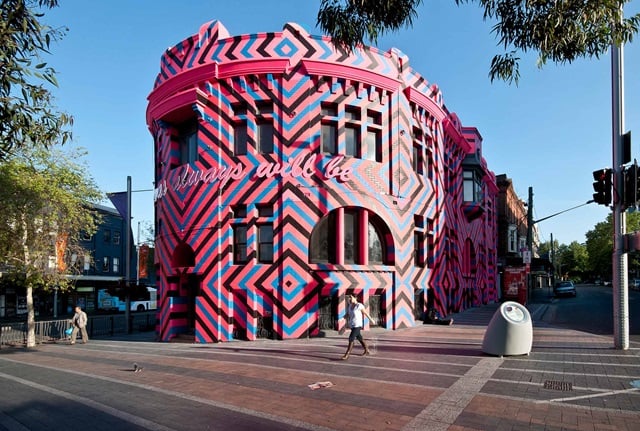


Cascading water references Busby’s Bore, the tunnel built to secure Sydney’s water supply in the 1800’s.
Artwork description
Water cascades down through 4 stepped levels, emptying into 3 pebbled, irregularly-shaped shallow pools of around 1m to 2m diameter. The length of the fountain is around 12m, set among thick ferns and shrubs.
A descriptive plaque is located around 1m north of the highest point of the fountain. The fountain was installed in 1962 in the northwest corner of Hyde Park.
The Busby’s Bore Fountain commemorates the Busby Bore, a tunnel built to bring water from the Lachlan Swamp (now Centennial Park) to Hyde Park. John Busby, a mineral surveyor and civil engineer, identified the Lachlan Swamp as a potential source of water after completing his survey in 1825.
Busby described the water as "perfectly transparent and colourless, free from every taste and smell, and so soft as to be fit for washing and every other domestic purpose". At that time, Sydney’s water supply was at best uncertain and the town had experienced a series of crises in its water supply due, in part, to drought.
His scheme to tap the Lachlan waters was adopted late in 1827. It was built by convicts and took some 10 years to complete. From 1830 the work, though unfinished, fortuitously provided significant quantities of water for public use as groundwater filtered into the tunnel and seepage springs were tapped. The bore was Sydney’s sole source of water until 1859.
Artist
John Byrom was an architect. He won a public competition to design the memorial, conducted by the Sydney Fountains Committee of the City of Sydney.
Inscription
On a plaque located around 1m north from the fountain, an inscription reads:
“As the Tank Stream, the original source of water, was dwindling and had become befouled, Governor Darling in 1826, directed the Government Mineral Surveyor and Civil Engineer, John Busby, to undertake the task of increasing the water supply to Sydney. John Busby proposed and supervised the construction of a tunnel from Lachlan Swamps (now Centennial Park) to a position in Hyde Park opposite Stanley Street and near College Street. Work commenced with convict labour at Hyde Park on August 15, 1827. The tunnel was completed in May 1837, and was approximately 12,000 feet long with an average cross section of 5 feet by 4 feet. It cost 24,000 pounds to construct, and delivered up to 400, 000 gallons daily. Water was carried by pipes, supported on trestles, from the tunnel end to an enclosure near the corner of Elizabeth and Park Streets until 1844, when pipes were laid from the tunnel to various parts of Sydney. The Bore remained Sydney’s sole source of water until 1859.
“The Fountain was placed in operation by Lord Mayor of Sydney Alderman H.F. Jensen on 26.10.62. J.H. Luscombe Town Clerk Designer: John Byrom – Architect.”




